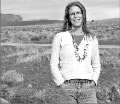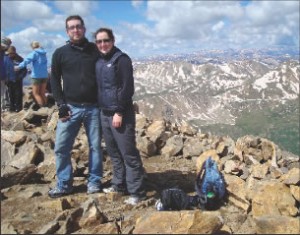by Susan Bavaria
Ranging in age from 81 on down, several regional women authors have written books as varied as river stones. Tackling subjects ranging from geology to self-publishing, these six writers exemplify the moxie needed to endure the publishing process and a love for language that creates worthy content. Some have taught students. Some have experienced far-flung adventures in the quest to find a good story. Some are members of the Colorado Authors League. All share a passion for good literature and an innate curiosity about the world we share.
Laurie Hendrie

Salidan Laura Hendrie won the Mountain and Plains Booksellers Association Fiction Award for Stygo in 1995, the year after Barbara Kingsolver won it for Pigs in Heaven. The book was also a finalist for the PEN/Hemingway Award. Her novel Remember Me, published in 1999, was a Book Sense 76 pick. Both books feature odd, memorable characters that inhabit the mythical, suspicious territory of northern New Mexico.
“Landscape changes the way people speak,” says Hendrie. “Air, light and space affect language and the way we put concepts together.”
One of five children raised in Colorado Springs, she learned the power of exaggeration and telling an incredible story from her father, who was a businessman and professional gambler.
“There’s nothing more satisfying than working with characters. It’s like going to a great cocktail party and seeing what people have to say. If you work with them long enough, they can start talking back.”
Encouraged by fellow writer Kent Haruf to come to Salida, she’s found it a good place to write.
“You can be a regular person. People give you privacy, and they don’t care how weird you are.”
She likes how the town encourages community involvement and has served as a hospice volunteer. She teaches in a low-residency Master of Fine Arts program at Warren Wilson College in Asheville, N.C., edits private manuscripts and has taught seminars at Lighthouse Writers Workshop.
Elaine Long

“After my first husband’s death in 1965,” says Elaine Long of Nathrop, “I took a sampling of my work to a publisher and asked him if he thought I could be successful as a writer.” The man told her she had what it took if she was willing to work. “It’s taken work! I’ve had over 600 rejection slips in my career.”
She’s researched each book, learning about mining (Jenny’s Mountain, 1987 Best First Novel Award from Western Writers of America), sheep ranching (Bittersweet County, 1991) and bear biology (Bear Ridge, 2006).
“I think that the landscape of the West is always part of the story. I could not have written my novels if I had not been born in the West and lived on ranches, traveled across long empty miles, hiked alone in the mountains and helped my husband in his mines.”
Her early works were published by St. Martin’s Press, but she self-published her only non-fiction book, The Caregiver’s Choice, based on journals kept during 14 years caring for a mother with Alzheimer’s disease and a husband who died of lung cancer.
“I wrote this book to save my own sanity and loaned it out when other caregivers asked for advice.”
At age 74 and a half, she’s trying to figure out how to quit working and is focusing on songs for a second CD.
“I have two more novels to polish and market, and I want to publish a collection of odd short stories.”
Nancy Oswald

Nancy Oswald lives with her husband on a Cotopaxi cattle ranch on land that’s been in her family for 50 years. She teaches at the local elementary school and works with the Southern Colorado Writing Project, which promotes writing in the classroom. She writes Colorado-based historical fiction for ages 10 and up.
“When we lived in British Columbia, I listened to stories of real people who settled the area. When we moved back to Colorado, this idea carried over to my first book.”
Nothing Here But Stones tells about a Jewish agricultural colony that existed in Cotopaxi in 1882, remnants of which extended onto the Taylor/Oswald Ranch. Little of the land was fit for cultivation, and after two harsh winters the settlers abandoned the land. Her second book, Hard Face Moon, is about a Cheyenne Indian boy and events leading up to and throughout the Sand Creek Massacre. A lover of research, it’s important for Oswald to visit, understand, or optimally live the setting she writes about in her books.
Once an Outward Bound instructor, she considers herself fortunate that she lives in places where the “stars are distinct, and I can see the layering of the mountains on the horizon in shades of purple and gray.”
She says the publishing process requires finding some balance.
“I try to keep things in perspective and not get too upset if a book doesn’t do as well as I think it should. I try to celebrate each time a reader connects with what I’ve written.”
Marilyn Ross

“Life has provided me with a rich vein of experiences to mine,” says Marilyn Ross of Buena Vista. Her book titles include Creative Loafing, Country Bound and The Complete Guide to Self-Publishing being released in its fifth edition by Writers Digest in 2010.
For 35 years she and her late husband helped writers and professionals write, produce and market their own books, coming to Buena Vista in 1986. They self published 15 nonfiction books, five picked up by major publishers. She recently sold the business but remains an active adviser to the new owner of SelfPublishingResources.com.
She’s helped several authors sell rights to trade publishers once they had reached sales of from 2,000 to 5,000 self-published copies.
“Having a finished product also helps interest commercial publishers. When a book has been professionally edited and designed appealingly, it is much more interesting than just a manuscript.”
One of her clients was offered a $30,000 advance for his manuscript, but he opted to refuse it and self-publish his book. Later, he sold the rights to a different trade publisher for $100,000.
Ross says self-publishing is best for books that fit a niche.
“I wrote Shameless Marketing for Brazen Hussies, which targeted women entrepreneurs. When you focus on a niche, marketing becomes easier. You can find and penetrate your audience through specialty publications and associations.”
Virginia McConnell Simmons

The University of Colorado Press published the most recent work of 81 year old historian Virginia McConnell Simmons in 2007. Drifting West: The Calamities of James White and Charles Baker, is an account that brings together 1860s gold prospector Charles Baker with James White, who may have negotiated the Grand Canyon in 1867, two years prior to John Wesley Powell’s alleged first descent.
Having written more than a dozen books and numerous magazine and newspaper articles, Simmons says she “has been around the block a few times” during her 50 year career. In the San Luis Valley, many local people know her as the Rabbitbrush Rambler, the column she wrote for the Valley Courier newspaper for 27 years.
The San Luis Valley: Land of the Six-Armed Cross was released in paperback in 1999. It’s the acclaimed standard history of the area, a chronicle that ranges from the prehistoric peoples and historic Indians to the arrival of early Spanish settlers, trappers, American explorers, railroads and Euro-American pioneers.
Currently she’s creating a presentation about Bedouin weavers in Saudi Arabia based on experiences living and working there in the 1970s when she wrote for the Saudi Gazette and Arab News. Her interest in native weaving prompted a rare invitation to a Bedouin camp to observe a weaving demonstration by the host’s wives while a goat and rice simmered in a pot over the cooking fire.
Susan Tweit

Susan Tweit’s mother must have been puzzled to hear her Illinois-born daughter tell people she was from Wyoming, but that’s the terrain that claimed her heart as a young girl. She remembers riding in the back of her parent’s camper and looking up from her book.
“The whole morning was dewy. Elk Mountain was on the left and sagebrush on the right. I said to myself, “I’m home.”
A field ecologist by training, she turned to writing when she realized that she loved telling the stories in the data more than collecting it.
“I’m a writer of place; my work is rooted in the land and the community of species that animate it, humans included. Writing is how I make sense of the world–and myself. My aim is to write stories that teach us how to live in a generous, sustainable, and loving way.”
Tweit has published 12 books. Her second collaboration with photographer Jim Steinberg, Colorado Scenic Byways, was selected by Governor Bill Ritter as his personal gift to the Obamas, Clintons and state governors attending the Democratic National Convention. The book won the Foreward Magazine Travel Book of the Year and the Colorado Book Award in the Pictorial category. She also has an essay in the just-released anthology Thoreau’s Legacy: American Stories about Global Warming.
Her new memoir, Walking Nature Home, is the “engrossing, lyrical story of one woman’s spirited engagement with the natural world … and is a profound testament to the power of wild places to heal and make us whole,” said one reviewer.
Susan Bavaria, writes, gardens and watches birdbath drama unfold from her home in Salida.

